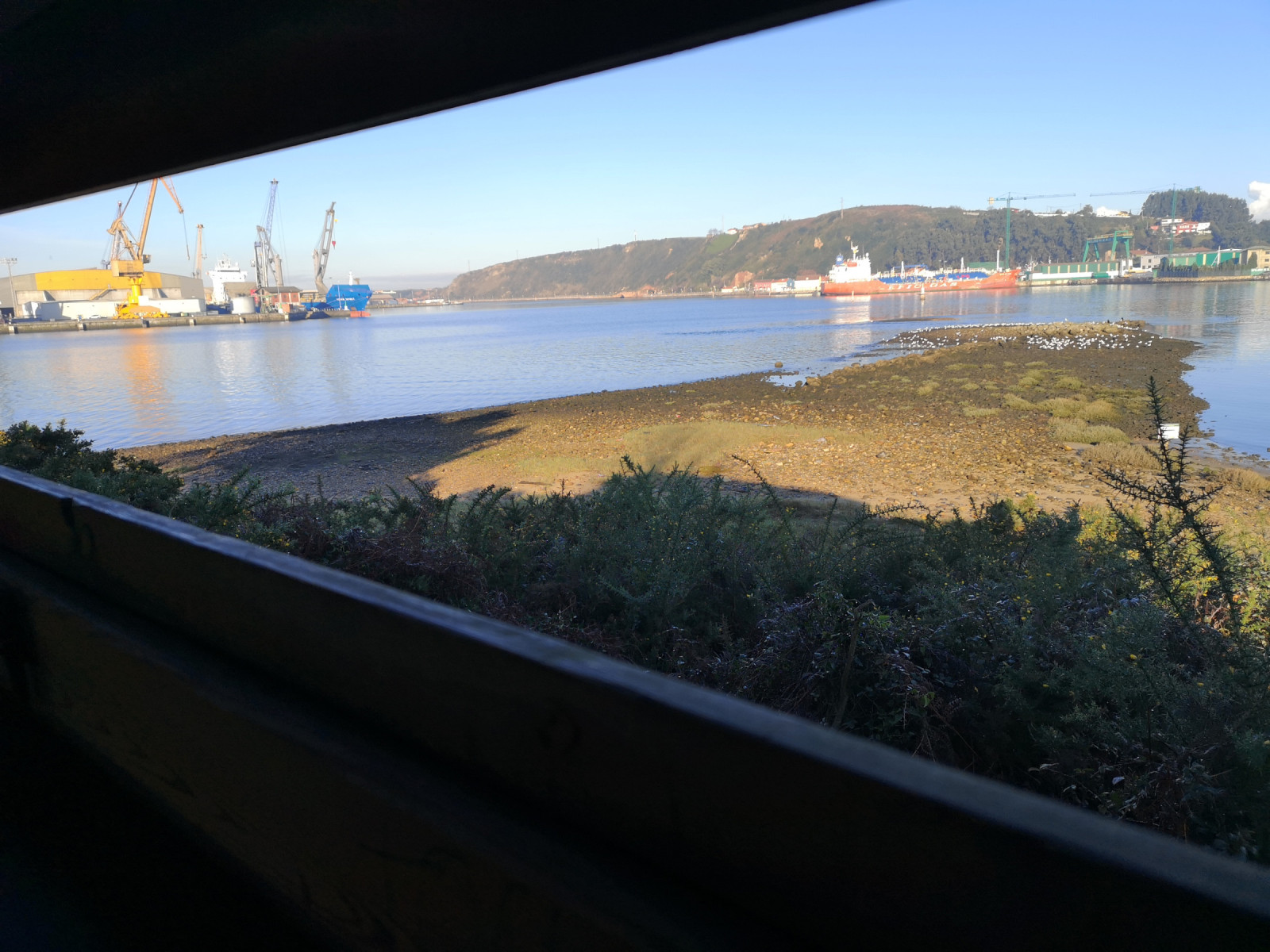Charger images
Les formats d'image autorisés sont de type jpeg, png ou gif
La taille maximale du fichier doit être de 20MB

Wetland and estuary that is a refuge for many waders and other birds on their migratory routes.
This very varied and protected site near the village of Zeluán includes a small wetland and an inlet located on the right bank of the Ría de Avilés, near its mouth. Despite being included in a very degraded estuary occupied by large industries and next to one of the most important ports in the north of Spain, the Avilés estuary is of vital importance as a stopping point in the migratory passage of thousands of birds.
The annual passage is estimated at between twenty thousand and forty thousand birds. During the summer and winter the presence is limited to less than a hundred birds per day, rising to four hundred in the autumn nigration and more than a thousand in the spring migration. At low tide, the birds are scattered all over the inlet, but as the tide rises they concentrate on the beach and the Islet of La Llera, to finally occupy the latter place exclusively. For a tides table see the link below. Among the birds that can be seen are waders like Chevalier guignette, Barge à queue noire, Barge rousse, Courlis cendré, Courlis corlieu, Tournepierre à collier, Pluvier argenté, Huîtrier pie, Grand Gravelot, Chevalier gambette, Bécasseau maubèche, Bécasseau variable and ducks, herons, cormorants and grebes.
_________________________
Espagnol: Este espacio protegido incluye una pequeña charca y una ensenada situada en la margen derecha de la Ría de Avilés, próximas a su desembocadura. Pese a estar incluida en un estuario muy degradado ocupado por grandes industrias y junto a uno de los puertos de mayor importancia en el norte de España, tiene una vital importancia como punto de parada en el paso migratorio de miles de aves. La ría de Avilés destaca, junto con las de Villaviciosa y del Eo, por ser uno de los tres enclaves de la costa asturiana de mayor interés como refugio de aves limícolas en sus rutas migratorias. Basta señalar que se estima el paso anual de entre veinte mil y treinta mil aves, habiéndose llegado a censar en los años más favorables del orden de cuarenta mil.
Durante el verano y el invierno la presencia se limita a menos de cien aves diarias, que se elevan hasta cuatrocientas en el paso postnupcial y hasta más de un millar en el paso de primavera. Durante la bajamar las aves se encuentran repartidas por toda la ensenada, pero a medida que sube la marea se concentran en la playa y en el Islote de la Llera, para finalmente ocupar en exclusiva este último lugar. Los limícolas son el grupo más abundante en el paso: correlimos comunes, zarapitos reales, archibebes comunes o agujas colipintas pueden observarse junto a ocasionales rarezas desviadas de sus rutas migratorias habituales. También son frecuentes otras aves acuáticas como patos, garzas, cormoranes o somormujos.
The Avilés estuary, the small wetland and the bird hide are located 5 km north of the town of Avilés near the village of Zeluán. Click on the P on the map for directions to the parking lot. From the parking lot you can explore the area on foot.
_________________________
Espagnol: La ría de Avilés, el pequeño humedal y el observatorio de observación de aves se encuentran a 5 km al norte de la localidad de Avilés cerca del pueblo de Zeluán. Haga clic en la P en el mapa para obtener indicaciones para llegar al estacionamiento. Desde el aparcamiento podrás explorar la zona a pie.
Votre feedback sera transmis à l’auteur.rice de cette zone et à l’équipe éditoriale de Birdingplaces, qui l’utiliseront pour améliorer la qualité des informations. (Vous souhaitez publier un commentaire visible en bas de page ? Fermez cette fenêtre et choisissez l’Option 1 : « Publier un commentaire, un conseil ou une observation ».)
Veuillez fournir des suggestions d'améliorations ou d'ajouts au texte de ce site ornithologique.
Veuillez fournir vos suggestions d'améliorations ou d'ajouts à la carte.
Veuillez fournir des suggestions d'améliorations ou d'ajouts à la liste des oiseaux.
Cliquez sur l'icône de l'oiseau () Insérez les noms d'oiseau dans votre langue. Ils seront automatiquement traduits pour les autres usagers !